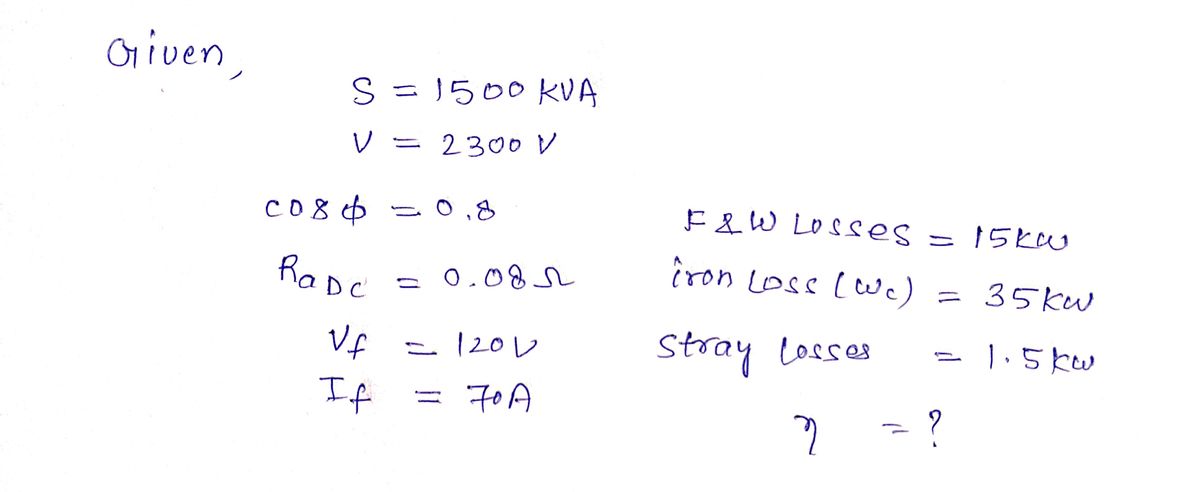3. Determine the efficiency of a 1500 kVA, 2300V, 3-phase Y-connected alternator, which operates at rated output with a power factor of 80%. The DC armature resistance at 70°C terminals is 0.08 ohm. The field takes 70A at 120V from the exciter equipment. Friction and windage losses are 15 kW, iron loss is 35 kW, and the stray load losses is armature winding resistance is 1.5 times the DC value. between 1.5 kW. Assume the effective a. Full load b. holç load
Load flow analysis
Load flow analysis is a study or numerical calculation of the power flow of power in steady-state conditions in any electrical system. It is used to determine the flow of power (real and reactive), voltage, or current in a system under any load conditions.
Nodal Matrix
The nodal matrix or simply known as admittance matrix, generally in engineering term it is called Y Matrix or Y bus, since it involve matrices so it is also referred as a n into n order matrix that represents a power system with n number of buses. It shows the buses' nodal admittance in a power system. The Y matrix is rather sparse in actual systems with thousands of buses. In the power system the transmission cables connect each bus to only a few other buses. Also the important data that one needs for have a power flow study is the Y Matrix.
Types of Buses
A bus is a type of system of communication that transfers data between the components inside a computer or between two or more computers. With multiple hardware connections, the earlier buses were parallel electrical wires but the term "bus" is now used for any type of physical arrangement which provides the same type of logical functions similar to the parallel electrical bus. Both parallel and bit connections are used by modern buses. They can be wired either electrical parallel or daisy chain topology or are connected by hubs which are switched same as in the case of Universal Serial Bus or USB.
a.) full load
b.) half load


Step by step
Solved in 4 steps with 4 images









